Who is this book for?
What Age Guidelines Get Wrong About Readers
Last weekend, I was honored to take part in Jackson Reads, a community literacy event sponsored by the Jackson County Intermediate School District. The event brought in several children’s authors and placed 25,000 new books into the hands of children and families. It gave me hope.
Families entered the Ella Sharp Museum and simply shared their school district with local teacher volunteers, and then were ushered into an auditorium to receive a bag of 10 books, based on their age. My book was given away in the 6th-8th grade bag, and I had the joy of sitting nearby to sign books and talk with those who came by.
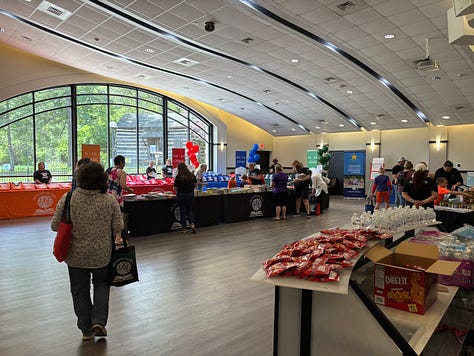
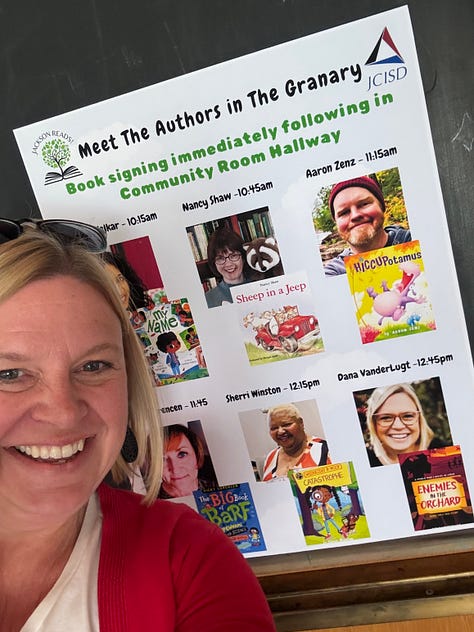


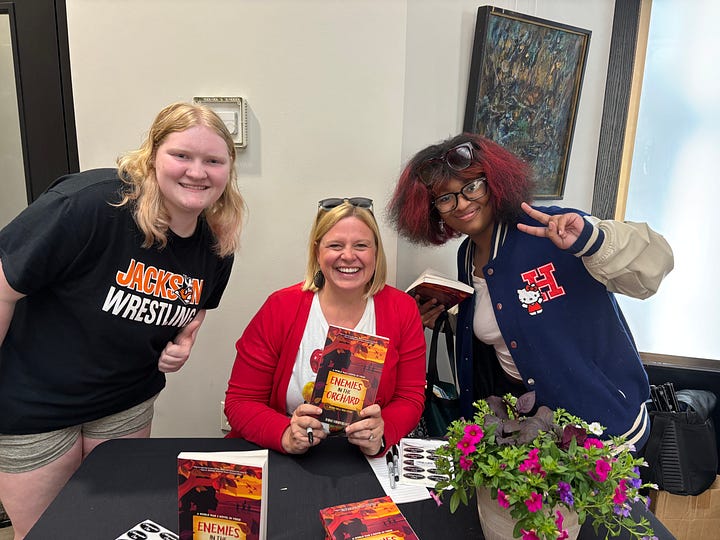
The organizers also gave me a box or two of extra books that I could sign and give away. I loved not having to collect any money, but just freely sign and hand a book to anyone who might want one.
Though categorized as a middle-grade read, I signed books for 5-year-olds and 80-year-old grandparents who were spending the day with their grandkids. I gave copies away to 5th graders who wandered in the museum in their uniforms and cleats, sweaty from playing on the nearby soccer fields, as well as their moms and dads who picked up the book and said, “I think I might like this, too.”
“It’s for everyone,” I told those who asked what age group my book is written for.
Age recommendations on books are not an exact science. When I was writing Enemies in the Orchard, I often thought of the 8th graders I taught in my classroom for more than a decade, but I imagined all ages reading it. I wrote it for other English teachers like me, I wrote it for my family who miss and long to return to our old orchard that is now bulldozed and gone, and I wrote it for myself—the adult trying to make sense of the world and the adolescent that still is buried deep inside me.
Katherine Rundell, in her tiny but miraculous book, Why You Should Read Children’s Books, Even Though You Are So Old and Wise, writes, “I’ve been writing children’s fiction for more than ten years now, and I still would hesitate to define it. But I do know, with more certainty than I usually feel about anything, what it is not: it’s not exclusively written for children. When I write, I write for two people: myself, age twelve, and myself, now, and the book has to satisfy two distinct but connected appetites.”
Rundell goes on:
“So what I try for when I write—failing often, but trying—is to put down in as few words as I can the things that I most urgently and desperately want children to know and adults to remember. Those who write for children are trying to arm them for the life ahead with everything we can find that is true. And perhaps, also, secretly, to arm adults against those necessary compromises and necessary heartbreaks that life involves: to remind them that there are and always will be great, sustaining truths to which we can return.”
When my agent and I were pursuing publishers, she sent my manuscript to dozens of publishing houses, describing the book as a Young Adult novel. Some of the rejections were interesting: “it was not edgy enough,” the book was “too serious and sad,” “historical fiction isn’t selling well in the commercial market.”
In August of 2022, when Zonderkidz reached out with interest to purchase and publish the manuscript, they asked to do so under the middle grades category, to which I consented. Several months later, when the advanced reader copies were sent out to reviewers, the marketing material on the back said it was written for 9-12 year olds.
My dear teacher and mentor, Jack Ridl, contacted me right away to let me know a mistake must have been made. “I noticed on the back of your book it says for children ages 9-12. I truly can’t imagine that. Even when I read it , I felt it was adult. Did they perhaps mean for grades 9-12?”
I’m so grateful my editor and publisher were up for a discussion. I wrote them an email expressing Jack’s concerns were also mine.
I told them that I was losing sleep over the age guideline issue. As a middle school teacher, I resonated deeply with a recent Publisher's Weekly article about a lack of 13-15 year-old protagonists, and also pointed out that of my very favorite middleish-grade novel, Orbiting Jupiter by Gary Schmidt, had the age designation of 12+.
By saying who the book was for, I worried we were also implying who it wasn’t for.
The book’s marketing materials now list the book as ages 9 and up, though I often tell people it’s for ages 9-99. I’m so grateful my publisher was open to the conversation and willing to remove the age limit from the book’s marketing materials.
I’m in favor of removing any obstacle that might keep us from a good story. Especially something as arbitrary are our age.
“The human heart is not a linear train ride,” Rundell says.
And to that I echo: Amen—and thank goodness for stories that allow us to take the scenic route.
World War II for Kids
In a similar vein, check out this article published in last week’s Wall Street Journal about How World War II Became the Hottest Book Craze…for Kids.
Proving that there is a market for historical fiction for middle school kids, Huxley, an an eighth-grade boy says, “We should be allowed to know what happened so that we don’t make the same mistakes.”
When the Light Takes Longer…
In some personal family news, since I’ve last written here on Substack, my father-in-law passed away. It’s been a hard couple of months, but filled with more joy and celebration than I expected.
I’ve had a chance twice to sort through some thoughts in my contributions to the Reformed Journal.
One blog posted the day after Easter, the day after our family gathered to sit by the bedside of my father-in-law, whose earthly body was failing and at the same time celebrate both the birthdays of both my son and my mother-in-law.
I won't remember what we ate or what we wore that Easter. We didn't have a perfectly set table. And yet, we celebrated. Easter isn't theoretical when you’re holding life and death in the same breath. In the bright rays of morning or the dark silence of night, I was reminded of hope that holds, even when things are breaking.
When my time comes round to write for the RJ blog each month, I wrestle to land on a topic, trying to discern what words or stories I'm being called to share. In the midst of that week, my mind went back to earlier in April on a drive home from Florida. I kept thinking of how long those pre-dawn hours can feel, and how when I'm driving in what feels like infinite darkness, I plead for the light.
And the light usually takes longer to appear than I hope. But like Easter, hope also isn't theoretical, but adversarial. We fight for it, cling to it. Sometimes, hope is the most defiant thing we do.
Landing Softly
Then, last week I wrote about how I’ve learned to do a box jump.
A soft landing means bending your knees and absorbing the impact rather than hitting the ground with straight legs and jarring force. While you work up the momentum and courage to jump, you also need to stay loose enough to land with some ease and flexibility.
Lately, I’ve been thinking a lot about the importance of a soft landing—especially when it feels so natural to brace for the worst. I’ve been wondering what it looks like to live in a broken world without becoming brittle.
Thank you for reading with me. For being beside me. For giving me a place to land softly.
With gratitude,
Dana



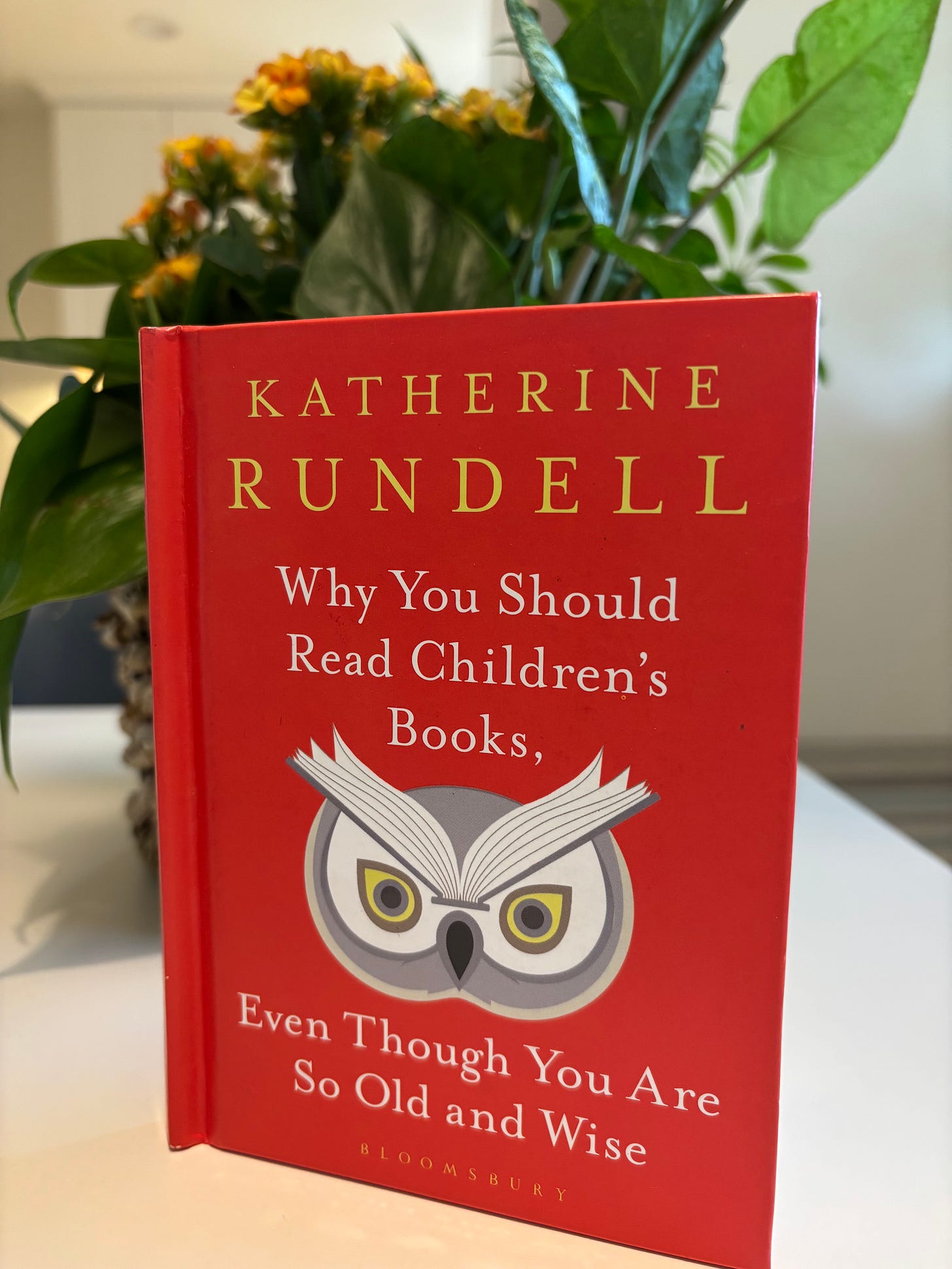

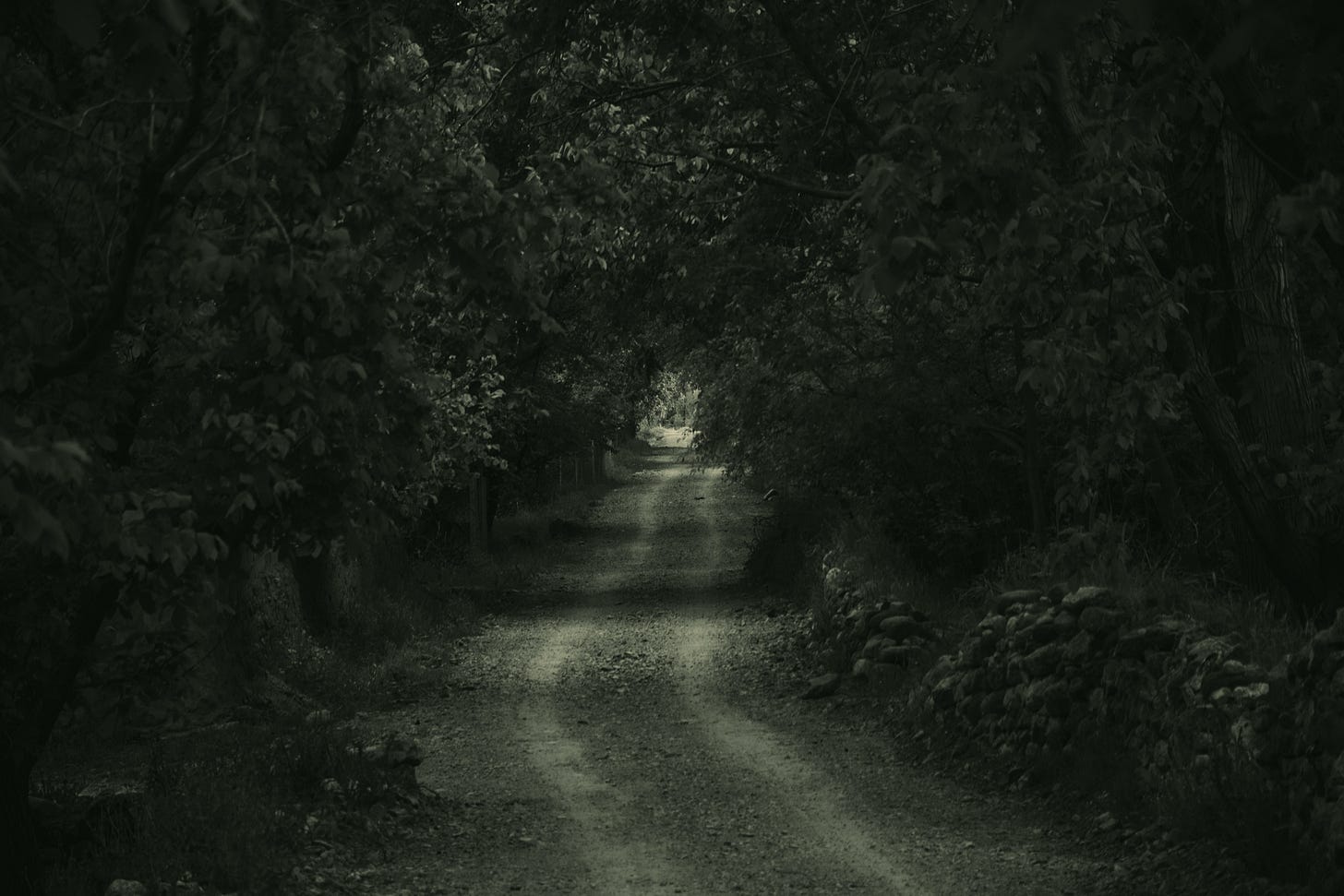

I am celebrating that vital change with a bunch of cookies for ages four and up.
I didn’t know that I actually helped . Thank you for such a loving acknowledgment. It’s interesting that simply stating the accurate unintentionally helped.
Dana- I’m so sorry about your father-in-law. My love to every one of you as you absorb this news. May you find lovely ways to remember his life.
Also, I second the sentiments around age level limits on book covers. I adored your writing and courageous family story and am decidedly not aged 9-12. I will more closely resemble “aged”.
Lastly, great job on box jumps!!🙌🏼